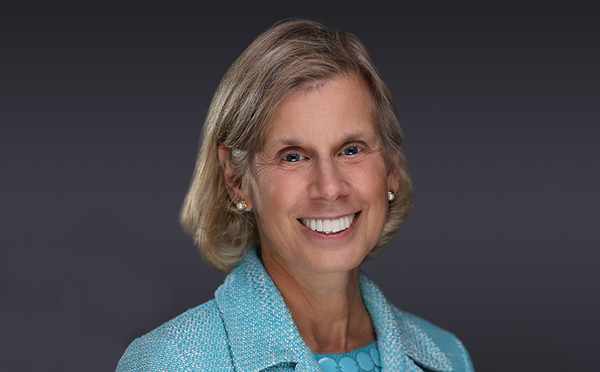Flexing Her Math Muscles.
Flexing Her Math Muscles
Elizabeth Mulvey, an attorney and part-time MPH student, plans to use her biostatistics training to help prevent adverse medical outcomes.
During her 20 years as a partner at Crowne & Mulvey LLP, Elizabeth Mulvey has tried hundreds of medical malpractice cases throughout New England. Working with so many people who have been injured by the healthcare system sparked an interest in improving patient safety. “It’s better to prevent harm,” she says, “than to give people compensation for it.”

Mulvey enrolled in the part-time Master of Public Health program in biostatistics to explore the idea of harnessing data to reduce devastating medical mistakes. “I’ve certainly never thought that doctors and nurses set out to hurt patients,” she says. “But having represented lots of people over the years, it seems like there are particular types of patients and particular situations that tend to have bad outcomes. And I’ve always wondered, if you had enough data, could you identify risk factors for bad outcomes and perhaps prevent them by making people aware of them?”
Mulvey sees several other intersections between statistics and the law. A current topic of discussion in the field, for example, is structural racism in the legal system and whether minorities are treated differently by the courts. Thirty years ago, Mulvey says, there were no definitive ways to answer those questions. “Now, so much data is computerized that it’s available for analysis, so there are ways to explore questions like that and to document disparities.”
More broadly, she says, lawyers are sometimes called upon to interpret statistics but aren’t always up for the challenge. “Unfortunately, most people went to law school because they weren’t good at math. You show them something with statistics, and they want to head for the hills.” But statistics can be powerfully persuasive—to an opponent, to a jury, to a judge. “And so I think lawyers are well served to understand statistics,” Mulvey says, so they can use them correctly in their own arguments and identify when they’re being misused in someone else’s.
“I was always sort of a math kid,” Mulvey says, but as a high schooler, she didn’t see many practical applications for mathematics and so let her interest wane. During her first biostatistics course at SPH—Quantitative Methods for Public Health—her mathematical abilities were immediately obvious, says her instructor, Professor Michael LaValley.
“She did very, very well in the class,” he says. “She really stood out—and there were some really good students in that class, so to be a stand-out was quite something.” When Mulvey asked to take LaValley’s logistic regression course without completing all its prerequisites, he readily agreed, knowing Mulvey would have no problem mastering the material. “And she proved me right,” he says.
Mulvey, who also holds a master’s degree in health informatics from the Medical University of South Carolina, has finished the requirements for her SPH biostatistics degree, but she isn’t finished flexing her math muscles. BU’s Evergreen program allows area residents age 58 and over to audit classes for a nominal fee, and Mulvey is already planning to use the program to continue taking statistics courses.